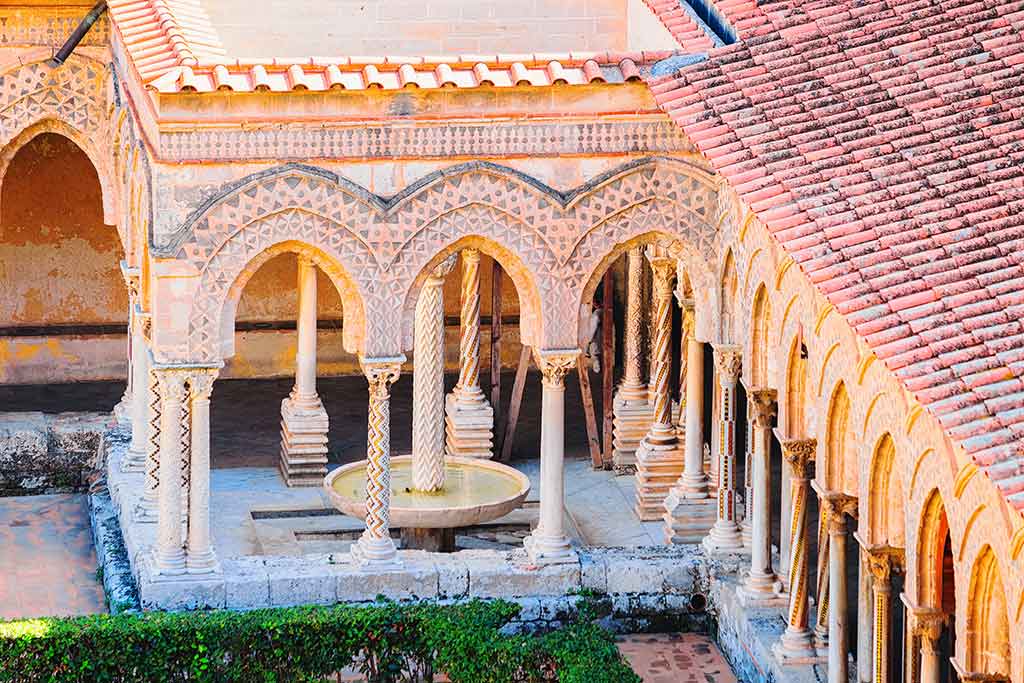Welcome
to Monreale Italy. If you’are planning to visit Monreale for your next trip and you are
looking for the best places to visit, here you’ll find tips and suggestions of most
popular point of interest and activities not to be missed in Monreale and surrounding.
Travelers will appreciate this italian town with
his rich historical and artistic heritage, local culture and environment. Discover the monuments, buildings, natural
treasures and all the details that characterize Monreale and its territory. Share and suggest a place you've
visited.

Cloister of the Cathedral of Monreale
Those who come to Sicily can not help but visit Palermo, and those who come to Palermo, can't ; ograve; do not go to Monreale which, moreover, is only 7 km from Palermo. The main attraction of this small town is the cathedral, beautiful to take your breath away, but also the road itself that leads to the destination offers unforgettable emotions and views .
The road that leads to Monreale starts from the sea, to the Cala — the ancient port of Palermo. Later he crosses the capital, continues for the famous Corso Calatafimi and leaving the city climbs between hairpin bends and splendid glimpses of the valley called the “Conca d & ; #39; gold'.
Definitely, the road that leads to Monreale already has something special in itself and, in my opinion, it is also a mandatory stage. Dating back to the Baroque period, it was decorated with scenic marble fountains that had to offer some refreshments to the Palermo aristocracy who climbed in a carriage to Monreale.
The cathedral, erected by King William II, is an example of Norman architecture, but there is an undeniable Arab and Byzantine influence. The cathedral amazes with its richness: mosaics, frescoes and the silhouette. The interior dazzles with gold background mosaics and the exterior leaves breathless for the refined stone shapes and decorations.
The Benedictine cloister located to the right of the facade of the Duomo is quite different. The columns that frame the cloister bear an Arabic style imprint, but after the sumptuousness of the Duomo, the visitor has a little relief thanks to the simplicity of the #39; architecture and the presence of greenery and water.
The cloister seems far from the confusion that reigns around the Duomo, and it is not difficult to imagine what this place should have been like at the time of William II.
written by Sheila Pickles - Last update: 26/10/2021
This guide has been translated automatically through a third party service. Visititaly offers these automatic translations to help site visitors, however the automatic translations may contain inaccuracies, errors or inaccuracies. You can contact us to report inaccuracies or errors and we will check the translation.